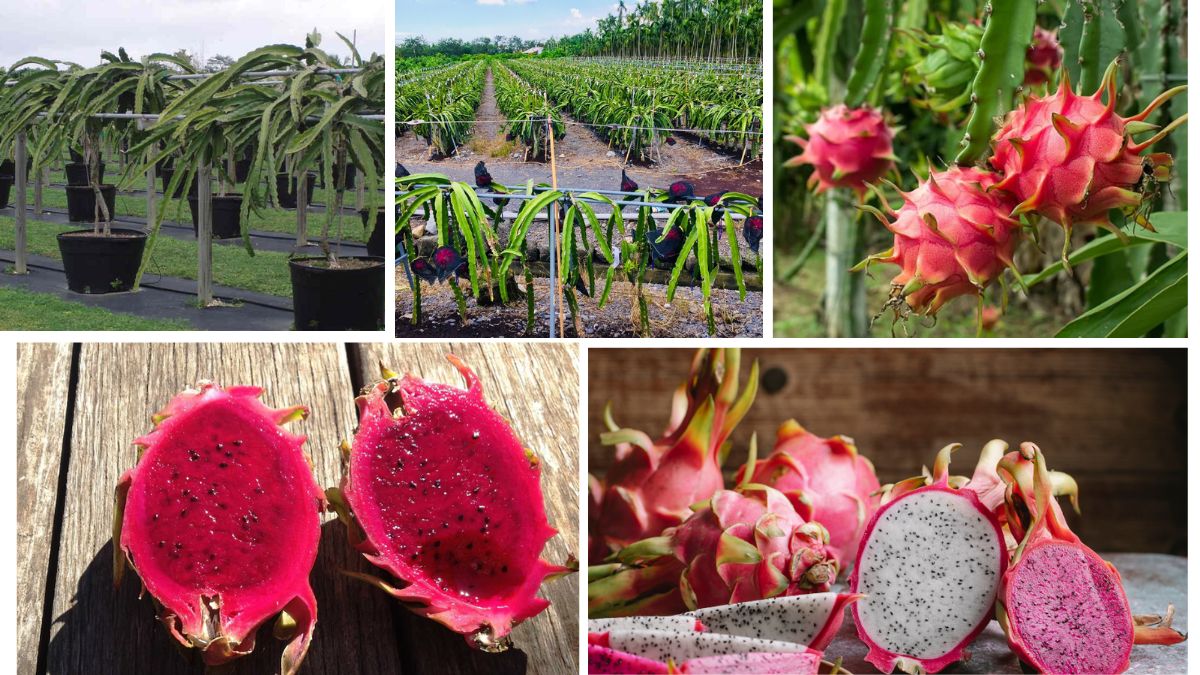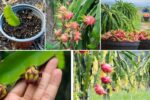Dragon fruit, also known as pitaya, is a fascinating climbing cactus with eye-catching stems and exotic fruits. While this plant is naturally adapted to climb and sprawl, training it properly is essential for maximizing space, boosting fruit yield, and keeping it healthy and well-managed. Whether you’re growing it in a garden, container, or greenhouse, this article offers a detailed, step-by-step guide on how to train your dragon fruit plant to climb like a pro.
Why Train Your Dragon Fruit Plant to Climb?
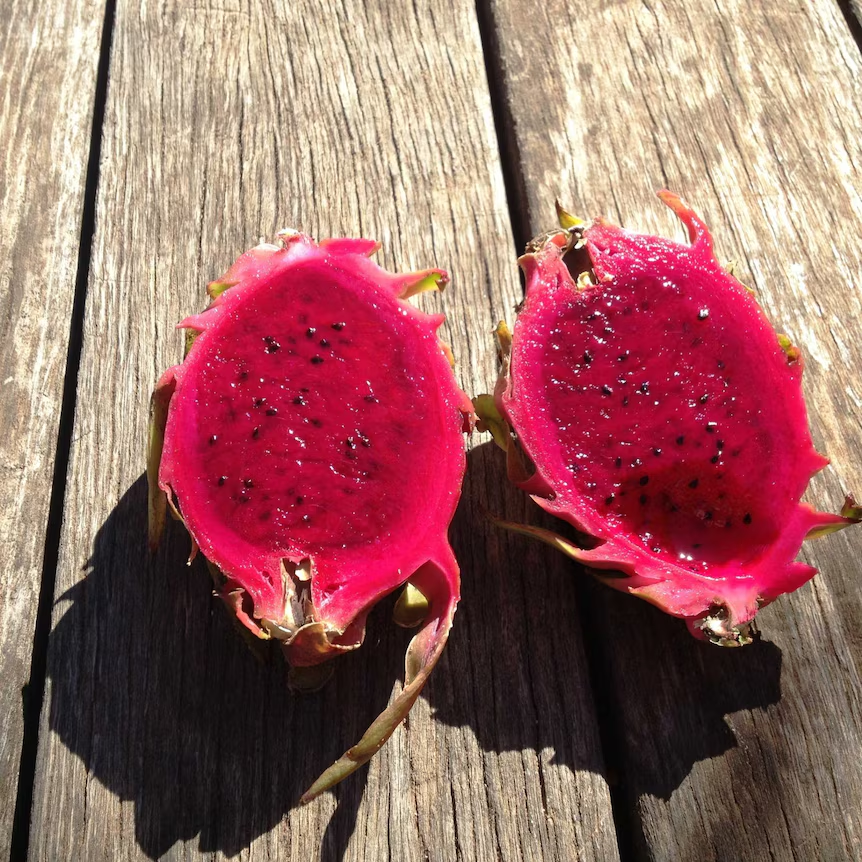
Before diving into techniques, it’s important to understand why climbing support is necessary:
- Encourages Strong Growth: Vertical growth prevents weak, spindly stems.
- Increases Sunlight Exposure: Elevating the plant allows even light distribution.
- Prevents Stem Rot: Keeping branches off the wet ground reduces disease risk.
- Improves Air Circulation: Helps avoid fungal infections and pests.
- Maximizes Yield: Trained plants produce more flowers and fruits.
- Saves Space: Ideal for small gardens, patios, and balconies.
Step-by-Step: How to Train Your Dragon Fruit Plant to Climb
1. Choose the Right Support Structure
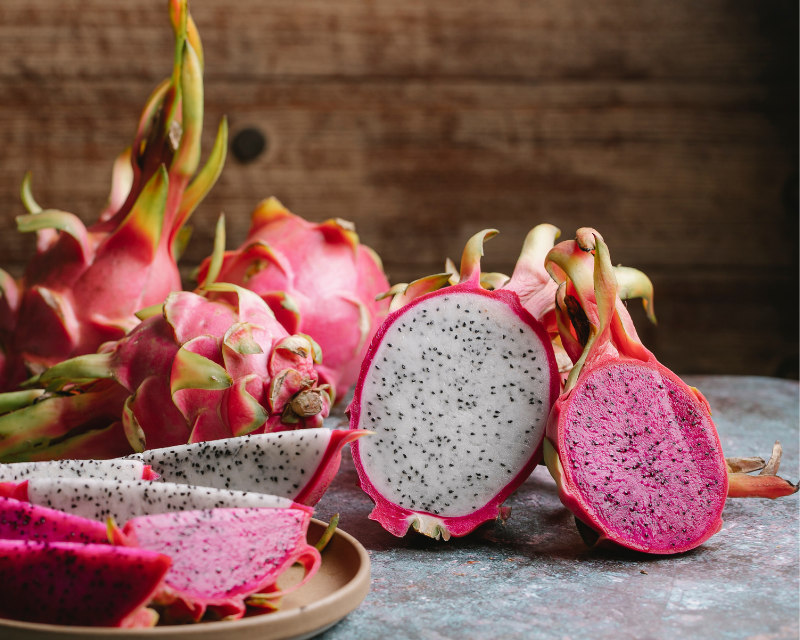
Dragon fruit plants need a sturdy vertical support system due to their heavy stems and climbing habit.
Best Support Options:
- Concrete or Wooden Posts: 4–6 feet tall, buried 1–2 feet deep for stability.
- Trellis or T-post System: Ideal for growing multiple plants in rows.
- Cage-Style Frame: Like a tomato cage but taller and stronger.
- Wall with Mesh or Lattice: Works well in patio or indoor gardens.
Tip: The top of the post should have a circular or cross-like structure for the stems to cascade down once mature.
2. Prepare the Base for Planting
Once your support is in place, it’s time to prepare the soil and plant:
- Choose well-draining, sandy or loamy soil.
- Mix in compost or organic matter for nutrient support.
- Dig a hole near the base of the post or trellis—6 inches away is ideal.
- Plant the dragon fruit cutting or seedling deep enough for stability.
Pro Tip: Dragon fruit prefers slightly acidic to neutral soil (pH 6–7).
3. Use Ties to Train the Main Stem
As the dragon fruit plant starts growing, it will need help attaching itself to the support.
How to Tie:
- Use soft plant ties, garden tape, cloth strips, or Velcro ties.
- Loosely secure the main stem to the support as it grows upward.
- Tie it every 6–12 inches, adjusting for thickness over time.
- Avoid tight knots that restrict growth or damage tissue.
❗ Avoid using wire or string that could cut into the cactus stem over time.
4. Select and Strengthen the Leader Stem
The key to vertical training is establishing one dominant central stem, known as the leader.
- Identify the strongest, straightest stem from the base.
- Remove other smaller side shoots to direct energy to the leader.
- Keep training this leader vertically until it reaches the top of the support.
Side shoots can be saved for propagation or composting.
5. Allow Top Branching After Reaching the Summit
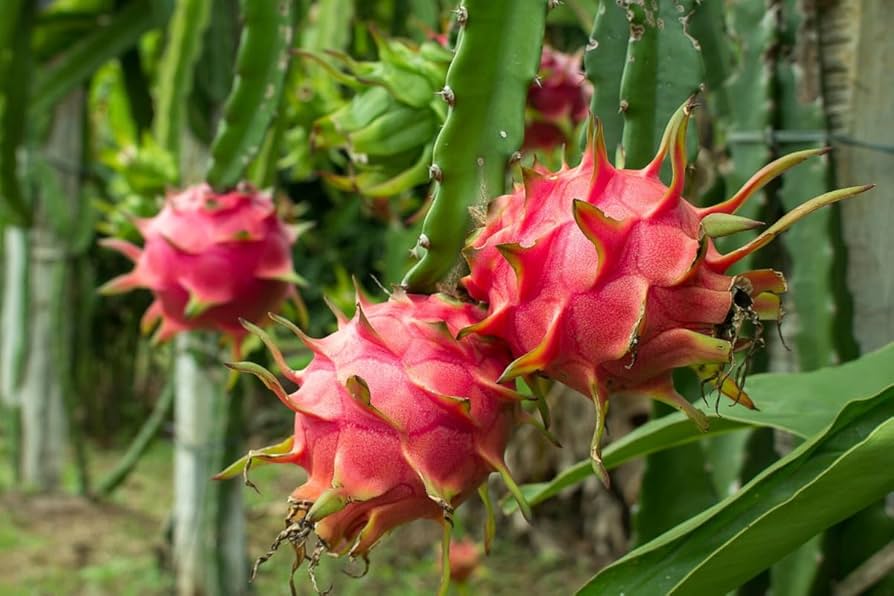
Once the main stem reaches the top of the post or trellis, encourage horizontal branching.
How to Encourage Top Branching:
- Pinch or prune the tip of the leader stem to stimulate lateral growth.
- Allow 3–4 healthy arms to develop from the top, hanging over the support structure.
- These hanging branches will produce most of the flowers and fruits.
Dragon fruit typically begins fruiting from these mature top branches.
6. Maintain Shape with Regular Pruning
To keep your climbing dragon fruit plant productive and tidy:
- Prune excess or crowded branches to maintain airflow.
- Remove diseased, broken, or downward-growing stems.
- Limit the number of arms (3–5 per plant) for energy conservation and better fruiting.
Best time to prune: Early spring or after fruiting season.
7. Monitor and Adjust Ties As Plant Grows
As the plant thickens, your original ties may tighten and damage the stem.
- Check ties every few weeks.
- Loosen or reposition them to prevent stem injury.
- Replace any worn-out ties as needed.
Additional Training Tips for Different Growing Situations
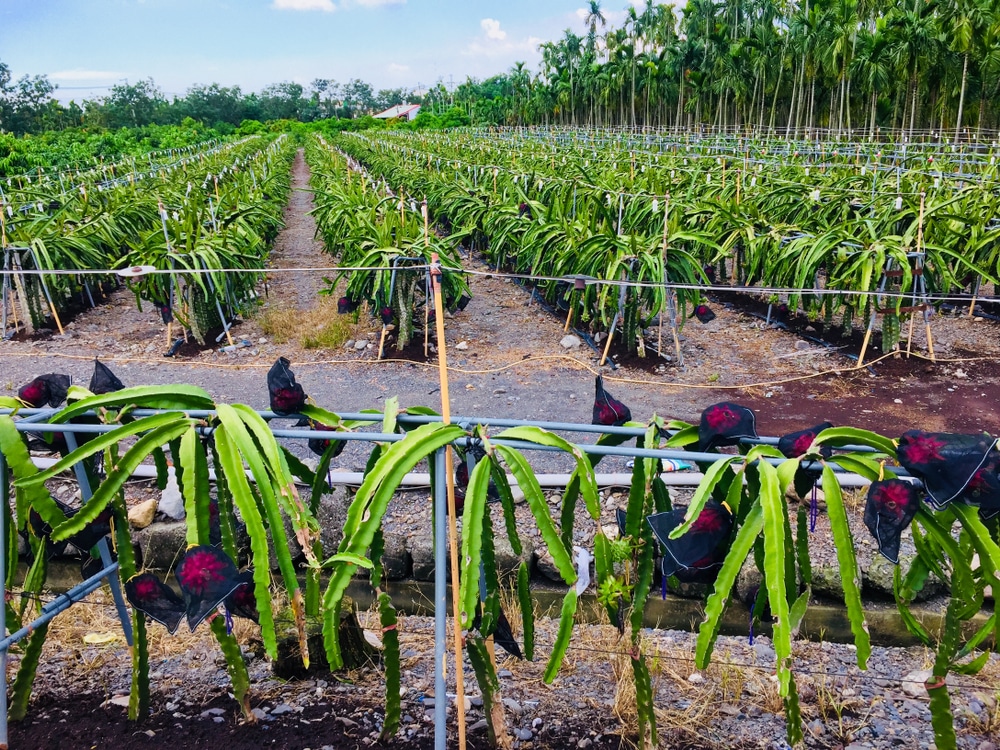
Container-Grown Dragon Fruit
- Use a strong stake or post anchored in the pot.
- Choose a container at least 20 gallons in size for mature plants.
- Move the plant to follow the sun if growing indoors or on balconies.
Multiple Plants on One Trellis
- Plant each dragon fruit 2–3 feet apart.
- Use a crossbar or circular top to support several branches.
- Regular pruning is even more critical to prevent crowding.
Espalier Training (Against a Wall)
- Train stems horizontally along wire or mesh.
- This method is great for limited vertical space or decorative walls.
- Hand-tie new growth weekly to maintain the desired shape.
Troubleshooting Training Problems
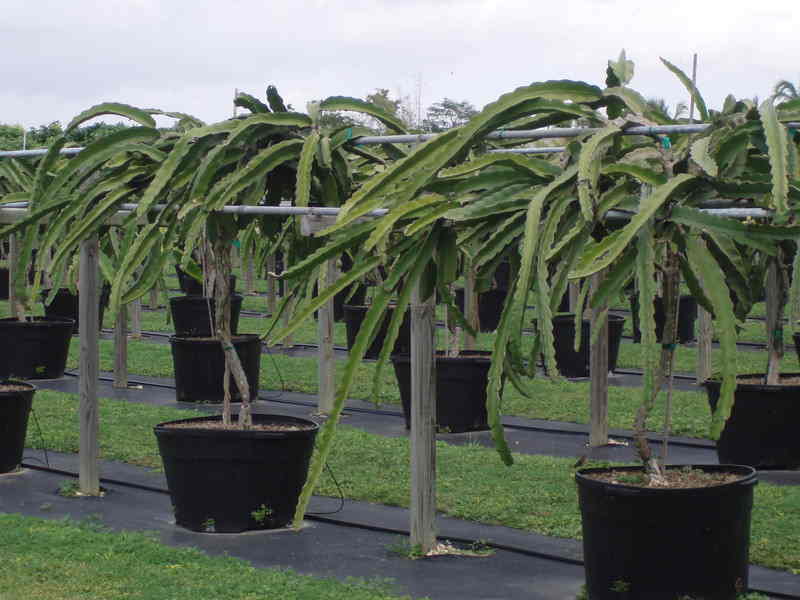
Problem: Plant Won’t Climb or Stand Upright
Solution:
- Check support stability—posts should be firm and tall enough.
- Tie stems gently but securely.
- Select a stronger leader stem and remove weak shoots.
Problem: Stems Falling or Breaking
Solution:
- Use a crossbar or top ring to catch hanging stems.
- Prune overly heavy branches to balance weight.
- Check for pests or diseases weakening the structure.
Problem: Growth is Slow or Uneven
Solution:
- Ensure plant gets at least 6 hours of sunlight daily.
- Use balanced fertilizer and well-draining soil.
- Avoid overwatering, especially in cooler weather.
How Long Until It Fruits After Training?
- Dragon fruit plants begin producing fruit 1–2 years after planting.
- Fruiting typically occurs during summer to fall, depending on the climate.
- Proper training and support can significantly increase yield and size of the fruits.
Hand-pollinating flowers (especially at night) can also boost fruit production.
Final Thoughts
Training your dragon fruit plant to climb is one of the most crucial steps toward a successful, long-lasting harvest. With the right support structure, strategic pruning, and regular maintenance, you can transform this exotic cactus into a stunning, fruit-bearing vertical feature in your garden or balcony.
Whether you’re a beginner gardener or a pitaya enthusiast, giving your dragon fruit the climb it deserves will not only improve plant health but also elevate your gardening experience.
